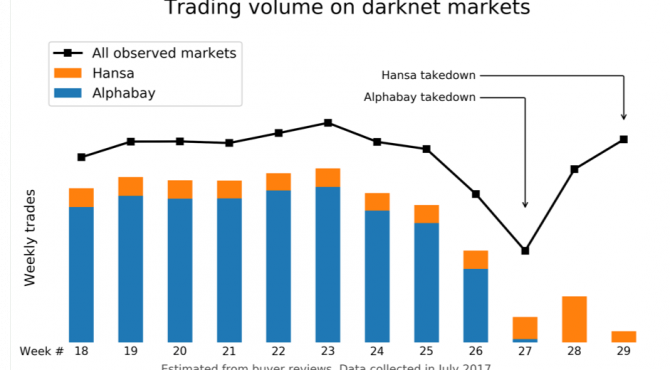Navigating the Darkness: A Compass to Darkweb Markets

The allure of the darkweb often allures those interested about the privacy it provides. As a hidden part of the Net, the hidden web houses numerous venues that operate outside the control of conventional law agencies. While often linked with illicit activities, these dark net markets appeal to customers for multiple reasons, including privacy concerns to the existence of distinct goods that cannot be found anywhere else.
Comprehending the nuances of darkweb markets is crucial for those looking to explore this obscure landscape. Whether you are a scholar, a security professional, or simply someone intrigued by the mysteries of the internet, this resource aims to illuminate the dynamics of these platforms, offering guidance into their working, potential risks, and the transforming nature of trade in the shadows of the dark web.

Introduction to Darkweb Markets
The dark web is a segment of the web that is typically not indexed by conventional search engines, which establishes it a obscure realm where individuals can act with greater anonymity. This aspect of the web is often linked to forbidden activities, and one of its prominent features is the presence of darkweb marketplaces. These markets function similarly to online marketplaces where items and services can be bought and sold, but they usually specialize in prohibited products such as controlled substances, weapons, and counterfeit items.
Exploring darkweb markets necessitates the use of specific software, most commonly the Tor network, which masks users' identification by directing their internet traffic through several servers. This concealment attracts both vendors and buyers who wish to keep themselves undiscovered by the authorities. However, with this appeal comes a range of dangers, including deceptions, interaction to unsafe materials, and the possibility for judicial consequences. It is crucial for anyone entering into these marketplaces to comprehend these dangers.
The structure of dark web marketplaces often mirrors that of real digital platforms, featuring customer ratings, ratings, and classifications for multiple items. Each marketplace has its own rules and frameworks, some functioning as freelance platforms for hacking offerings while others concentrate exclusively on tangible products. As such, the landscape of dark web marketplaces is constantly transforming, shaped by law enforcement crackdowns and user demand, creating it a fluid yet hazardous environment.
Grasping Dark Web Mechanics
The darknet functions on a unique set of principles that separate it from the surface web. One crucial factor is the focus on privacy. Users depend on specific software, such as Tor, to access underground services that are not cataloged by traditional search engines. This privacy fosters a setting where illicit activities can thrive, although not every darknet transactions are illegal. The dynamics of faith within these markets are complicated, relying heavily on user feedback and recognized trust systems.
Marketplaces on the dark web are fluid and can change swiftly, with new players coming in and current ones vanishing. darknet drug links creates a continuously changing landscape where buyers and sellers must adapt swiftly. It is not rare for markets to be short-lived, often closing up due to police crackdowns or inside conflicts. Even so, the tenacity of these stores means that emerging sites regularly appear, offering goods ranging from illegal drugs to counterfeit documents.

Another critical aspect is the method of currency utilized in these markets. Cryptocurrencies, particularly BTC, play a pivotal role in facilitating transactions while ensuring user privacy. However, variations in digital currency values can significantly influence the mechanics of buying and trading on the dark web. As users seek to lessen hazards associated with market variability, alternative payment methods such as stablecoins are becoming popular, adding another dimension of challenge to the financial environment of these platforms.
Security and Security on the Darkweb
Exploring darkweb platforms demands a high level of alertness and care. Individuals must equip themselves with protections such as virtual private networks and onion web browsers to guarantee their identification and actions stay hidden. Such measures help securing internet traffic and hiding your internet protocol address, making it challenging for malicious actors to trace your online actions. Moreover, regularly verify the legitimacy of the websites you visit, as numerous can be scams designed to steal personal information or deliver malware.
One more essential aspect of security on the dark web is the handling of payments. Many darkweb exchanges use crypto, as they offer a certain amount of anonymity. However, it is necessary to use secure wallets and to be aware of the risks associated with crypto theft and cyber attacks. Regularly execute transactions carefully, understanding the methods of securing your funds and making certain you are not becoming a victim to fraud. Developing a sense of doubt towards deals that appear too good to be true can save you from potential harm.
Lastly, practice good security protocols. This involves avoiding the sharing of sensitive information and being careful about the data you reveal even in encrypted services. Regularly refresh your protection software and stay informed about the newest threats emerging in darkweb spaces. Informing yourself about safe protocols assists in identifying potential dangers and strengthens your security while navigating the vast and often treacherous realms of the dark web.
